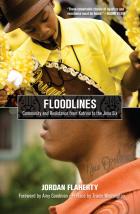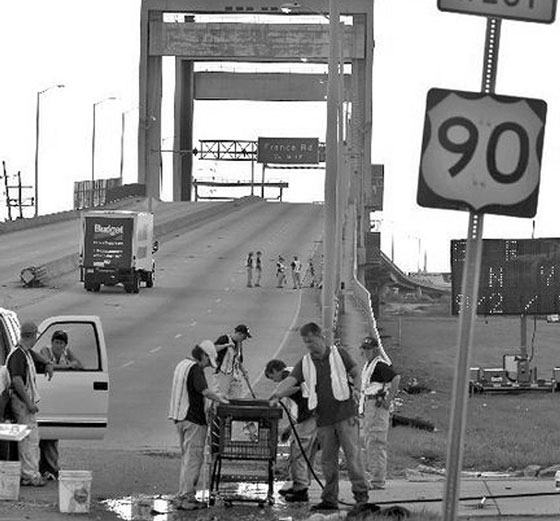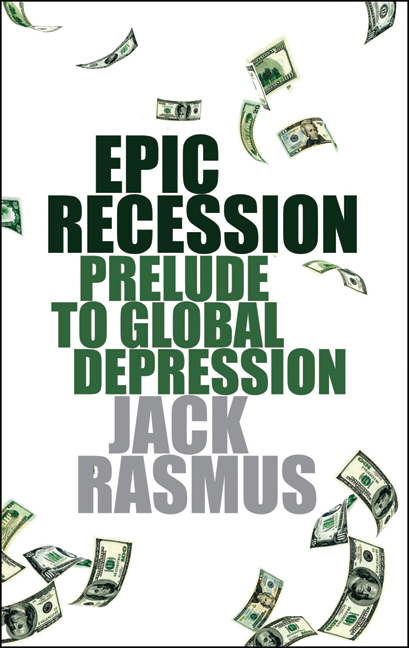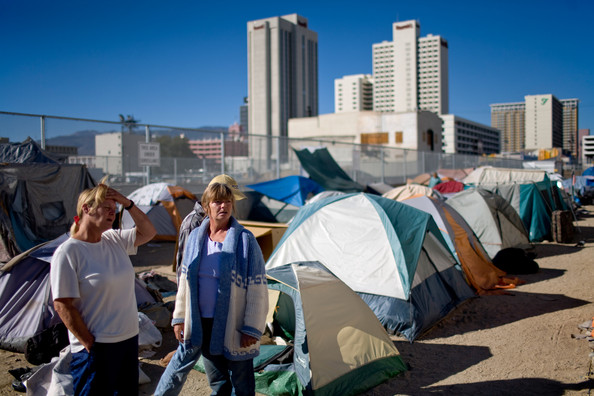Podcast: Play in new window | Download
Community and Resistance on the Gulf Coast: Five Years After Hurricane Katrina, Four Months After the BP Drilling Disaster. Speakers: Rosa Clemente, Jordan Flaherty, Damon Hewitt, and Shantrelle Lewis. Moderated by attorney Eric Poulos. This week we hear from Jordan Flaherty and Rosa Clemente.
Jordan Flaherty. Jordan is the author of the book Floodlines. He’s a journalist and community organizer based in New Orleans. He was the first journalist with a national audience to write about the Jena Six case, and played an important role in bringing the story to worldwide attention. His post-Katrina writing in ColorLines Magazine shared a journalism award from New America Media for best Katrina-related coverage in the Ethnic press, his reporting has been featured in the New York Times, and audiences around the world have seen the news segments he’s produced for Al-Jazeera, TeleSur, GritTV, and Democracy Now. Safe Streets
Rosa Clemente, community organizer, independent journalist and hip-hop activist. She was the vice presidential running mate of 2008 Green Party Presidential candidate Cynthia McKinney in the 2008 U.S. Presidential election. Clemente was born and raised in South Bronx, New York. She is a graduate of the University of Albany and Cornell University. Clemente has been delivering workshops, presentations and commentary for over ten years.
Clemente’s academic work has focused on research of national liberation struggles within the United States, with a specific focus on the Young Lords Party and the Black Liberation Army. While a student at SUNY Albany, she was President of the Albany State University Black Alliance (ASUBA) and Director of Multicultural Affairs for the Student Association. At Cornell she was a founding member of La Voz Boriken, a social/political organization dedicated to supporting Puerto Rican political prisoners and the independence of Puerto Rico.
—
Author, professor Jack Rasmus joins hosts during fund raising in an interview about his recent book, Epic Recession: Prelude to Global Depression. Rasmus says another bank failure in the world could plunge economies into a depression. Who are the banks lending to? Rasmus says banks haven’t lent to small, medium businesses in the US, they lending collapse has gone on for 15 months. The banks have lent to hedge funds, private equity firms and speculators who have invested in foreign markets, Chinese commodities, oil and gold. Meanwhile, private investors and non-bank businesses continue to invest trillions into derivatives and speculative markets away from solid investments and production. Review
- I think its necessary to explain what’s really going on. How we got here, how it’s different. Why is it so difficult to extracate from it? The first 3 chapters are theoretical, the next few are historical.
- 1907-1914 – You bail out the banks, and there’s no fiscal stimulus and what you get is an extended period of stagnation. It didn’t end until the massive fiscal spending of WWI.
- A type II Epic Recession, the banks aren’t bailed out, and there isn’t sufficient fiscal stimulus. We had two banking crisis, then followed by another one in 1932 and 1933.
- Jump forward, there’s a possibility of another banking crisis somewhere in the world, if so, then a global depression. Banks have been engaged in this speculative shift, where they built up this huge level of debt.
- There are about 25 million without jobs. The government number is 14 million, the U3 unemployment.
- 7 million homes foreclosed. 3 million over 90 days delinquent.
- The first thing you got to do is create a massive 10 million job program. You got to finance 10 million jobs and that will cost a trillion dollars.
- The banks are sitting on a trillion dollar cash horde. Private businesses, non bank businesses are sitting on a 1.84 trillion dollar cash horde.
- That’s not counting the 750 billion. The money is there, it’s not being spent after they’ve been bailed out.
- Obama was only trying to put a floor on the consumption collapse. Unemployment benefits, give some states money, retirees, but that’s played out.
- What we need in this country is what I call utility banking. Create a 401K pool that the government matches by individual contributions and invest in alternative energies.
- The Global Money Parade: There is 10 to 20 trillion dollars of speculative banking sloshing around the world now causing all these bubbles. In the hands of shadow banking institutions, wealthy investors who are tied into the major commercial banks. They’re creating financial fragility as more and more non bank businesses participate in derivatives trading.
Guest – Author and Professor, Jack Rasmus teaches in the Department of Economics and Politics at St. Mary’s College, Moraga, California.
Solutions list from our March 2009 interview with Professor Jack Rasmus.
Solutions:
- No way out of housing crisis without nationalizing housing market.
- Create a new government agency and properly fund it, – 900 billion dollars – it would create a small residential and business loan agency. Go in there and reduce long term principle and interest to long term averages that existed before 2002’s run up of huge speculation.
- That would be for all loans, not just the ones in foreclosure. Which would stimulate consumption not just shore up housing industry. Similar to the Homeowners Loan Corporation of the 1930s.
- Auto Companies – You can’t just have 3 US Auto Companies surviving. They have to be nationalized if they’re going to put that much government money into them. We don’t give them a penny unless they stop their investment and expansions overseas.
- Ford is building big plants in Petersburg Russia. GM is building big plants in Shang Hai, China. Immediately they should be required to build cars with proper mileage. Bring back 2 trillion of the 6 trillion that’s been stuff away in offshore tax havens in the last 20 years.
————————————————————————-



